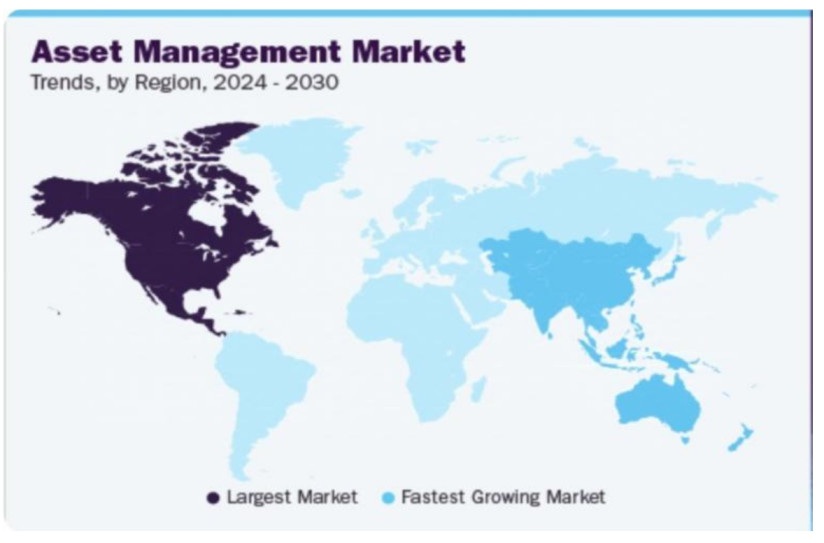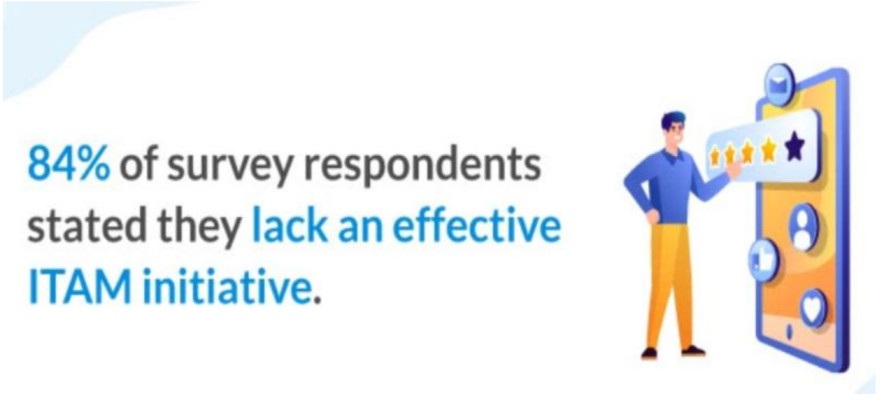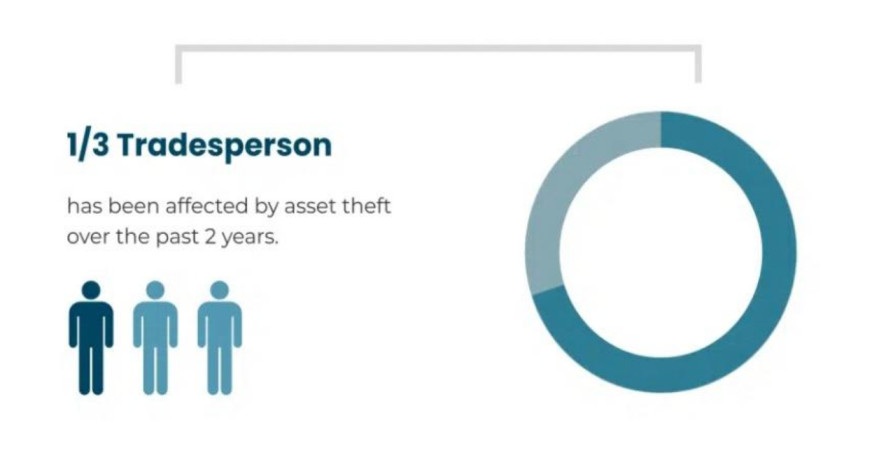Physical Asset Management: Importance, Examples, and Mistakes
Quality physical asset management is key to keeping your company profitable. Learn what physical assets, how to manage them, and the mistakes you must avoid.
In this article:
- What are Physical Assets and Their Types?
- Types of Physical Assets
- Technology Assets
- Office Equipment
- Tools and Instruments
- Furniture and Fixtures
- What is Physical Asset Management?
- Types of Asset Management
- Digital Asset Management (DAM)
- IT Asset Management (ITAM)
- Financial Asset Management
- Importance of Physical Asset Management
- Maximizing Asset Potential
- Better Safety and Compliance
- Maintenance Cost Optimization
- Downtime Reduction
- Enhanced Asset Lifespan
- Physical Asset Management Examples
- Manufacturing
- Healthcare
- Transportation
- Retail
- Energy
- Physical Asset Management Mistakes
- Working With Insufficient Data
- Lacking Staff Support
- Focusing On Asset Price Instead of Lifetime Value
- Conclusion

Every business has physical assets to manage, and doing it efficiently is the best way to ensure you stay profitable. It involves consistent monitoring and data collection of your assets with a quality physical asset management system.
Unfortunately, many organizations struggle to manage their assets, resulting in unexpected breakdowns, crippling downtimes, and a significant loss in productivity.
Are you also in the same boat and want to do better? This write-up is for you. We'll tell you what physical assets are, why they matter, and the most common mistakes you must avoid while managing them.
Read on for all the valuable details.
What are Physical Assets and Their Types?
Physical assets are tangible, real-world items that a business owns or leases. They can range from buildings and equipment to vehicles and inventory. Physical assets represent a significant portion of a company's overall value and are essential for its operations.
Unlike intangible assets like intellectual property, these can be touched and physically transferred from one place to another.
Types of Physical Assets
Since physical assets are tangible, they come in various sizes and for various purposes within a business. Let's understand their types and the functions they perform.
Technology Assets
While technology assets contain several software tools, they require hardware to run on, such as computers, networking equipment, servers, and the like. These physical assets have become critical to a company's day-to-day operations, especially for those invested heavily in technology.
Office Equipment
Office equipment includes items necessary for day-to-day operations but isn't usually included in technology assets, such as pens, paper, and the like. These are necessary to keep the office running efficiently and minimize downtime.
Tools and Instruments
Businesses require tools and instruments to perform precise and specific functions. These can include everything from simple tools like screwdrivers to complex ones like diagnostic machinery.
Furniture and Fixtures
These assets are essential for providing workplace comfort and functionality. The most common examples are chairs, desks, filing cabinets, and more. They enhance the aesthetic appeal of your office and make it more comfortable for everyone to work and perform at their best.
What is Physical Asset Management?
Physical asset management means managing and handling physical assets to achieve long-term performance. It goes beyond usual operations and tasks, pushing managers to adopt a new way of thinking about when to make the best use of their assets. Asset management aims to reduce repair costs by introducing a system in which each piece of equipment is handled according to its unique requirements and use cases.

A look at the asset management market's future by regions.
It is a holistic framework for designing smart and practical asset operations, beginning with purchase and ending with disposal. It results in the lowest possible ownership cost, optimizes returns on investment, and helps develop long-term funding strategies. The asset management industry is expected to hit $6.8 trillion by 2032, a significant increase from today's value.
Types of Asset Management
While we discuss physical asset management, let's also touch upon the other major types of asset management.
Digital Asset Management (DAM)
Digital asset management involves the storage, management, and distribution of digital media and content. These assets include intellectual property, building plans, agreements and contracts, and more. With controlled digital access to them, organizations ensure that they do not have to keep multiple copies. It also protects valuable data from fire, water, and natural disasters.
IT Asset Management (ITAM)
IT asset management refers to managing both hardware and software, including routers, computers, SaaS licenses, patents, and the like. It is a comprehensive system in which data is stored in secure hard drives and can be retrieved anytime. These digital files also have backups to retrieve data after a natural disaster.

Many companies do not have a proper ITAM plan.
Financial Asset Management
Financial asset management involves handling an organization's investments, such as real estate, brokerage services, and related intangibles. The financial team regularly tracks market rates, tax obligations, debts, payable fines or penalties, and other financial obligations.
The goal of financial asset management is to maximize profits and reduce expenditures.
These are the most common types of asset management in the industry today.
Importance of Physical Asset Management
The following are some key reasons that describe the importance of physical asset management.
Maximizing Asset Potential
Physical asset management lets organizations make the most of their physical assets. Managers can track and schedule maintenance activity to ensure that each asset performs at its peak without compromising its life. Similarly, asset management also tells you which assets are underutilized, and which you can sell or use more productively to reduce ownership costs.
Better Safety and Compliance
These days, all industries are heavily regulated, with several organizations and regulatory frameworks overseeing their activities. In such a tightly guarded environment, it becomes critical for firms to stay compliant and avoid unnecessary penalties and disrepute.
Physical asset management ensures that all physical assets are maintained according to the regulatory frameworks and operated within safe parameters. It helps companies follow safety standards strictly and improve their internal processes. Companies can also keep a detailed maintenance record, which can help them during audits by external agencies and organizations.
Free asset tracking software also helps you consistently monitor your physical assets, reducing theft risk. It is estimated that companies worldwide lose around $50 billion due to employee theft annually, a list you certainly do not want to be part of.

Asset theft is more common than most people think.
Maintenance Cost Optimization
Another major benefit of asset management is that it significantly reduces maintenance costs, which is often a major expense for any organization. Quality physical asset management software records all the maintenance details and observes trends, which can then help companies optimize maintenance schedules and prevent emergencies that require costly repairs. No wonder the maintenance software industry is growing rapidly and is projected to reach $14.8 billion by 2030.
Downtime Reduction
Every organization wants to avoid downtime, as it results in lost productivity, increased maintenance costs, and an erosion of stakeholder trust in processes.
A robust physical asset management system can tackle this problem by identifying potential issues before they even happen. As a result, you get timely information about anything that can go wrong and kill it right there. It is an ability to control and tweak the future to your organization’s benefit.
Enhanced Asset Lifespan
Acquiring physical assets requires a large monetary investment, whether a small or large organization. If those assets aren't maintained properly, it means extra repair costs, adding to the original expenses. That's completely unsustainable, especially for organizations with thin profit margins.
Quality maintenance can increase asset lifespan and reduce repair costs.
Physical Asset Management Examples
Physical asset management is a practical framework that helps several organizations maximize the potential of their assets. Let's look at some practical examples to make a case for PAM.
Manufacturing
- Equipment maintenance: Regularly scheduled maintenance and inspections of machinery, tools, and equipment to prevent breakdowns and ensure optimal performance.
- Spare parts inventory: Efficiently managing spare parts to minimize downtime and reduce costs.
- Asset tracking: Using RFID tags or barcode scanners to track the location and condition of assets, facilitating maintenance and theft prevention.
Healthcare
- Medical equipment management: Tracking and managing the lifecycle of medical devices, ensuring calibration, maintenance, and safe disposal.
- Infrastructure maintenance: Regular inspections and repairs of buildings, facilities, and utilities to maintain a safe and functional environment.
- Asset disposal: Safe and compliant disposal of obsolete or damaged medical equipment and supplies.
Transportation
- Vehicle fleet management: Tracking vehicle location, fuel consumption, and maintenance history to optimize operations and reduce costs.
- Infrastructure maintenance: Regular inspections and repairs of roads, bridges, and other transportation infrastructure to ensure safety and reliability.
- Asset tracking: Using GPS technology to track the location and condition of assets, such as containers or cargo.
Retail
- Inventory management: Accurate tracking of inventory levels to avoid stockouts or excess inventory.
- Asset tracking: Using RFID tags to track the location and condition of assets, such as display units or fixtures.
- Store maintenance: Regular inspections and repairs of store facilities to maintain a safe and attractive shopping environment.
Energy
- Power plant maintenance: Scheduled maintenance and inspections of power plants to ensure reliable and efficient operation.
- Asset tracking: Using sensors and IoT devices to monitor the condition and performance of assets, such as pipelines or turbines.
- Asset disposal: Safe and environmentally responsible disposal of obsolete or damaged equipment.
These are just a few physical asset management examples that can be implemented across various industries. By effectively managing their physical assets, organizations can improve efficiency, reduce costs, and enhance overall performance.
Physical Asset Management Mistakes
Organizations can often fall into the ‘vision trap,’ focusing on immediate concerns while eroding long-term value. The point of physical asset management is to build long-term value and improve efficiency. Let's look at the most common mistakes in asset management and their remedies.
Working With Insufficient Data
Working with insufficient data is a mistake that can cripple an organization in the long run. Many organizations resort to generic maintenance strategies after installing an asset. They rely on minor tweaks over time; there is no major overhaul of the strategy as times and requirements change.
Solution: Use a Digital Information System
There is no better way to gain valuable data than through a reliable asset management system. This live system provides you with quality data to maintain, modify, and operate your equipment at its maximum potential.
Lacking Staff Support
Maintenance doesn't happen in silos; it is a process within the larger management structure, something that every organization must understand. Maintenance managers might hurt the organization in the long run if they do not understand the ramifications of their maintenance activities.
Some people might sign off on tasks without even completing them, thinking they are not as important. By adopting these practices, they diminish the effectiveness of their work.
Solution: All Employees Onboard
Plans and goals don't really work unless all the employees understand their importance to the organization. For instance, machine operators can instantly sense a change in the machinery's sound or performance, making them crucial stakeholders in the maintenance process. They should be an integral part of the maintenance strategy, and their input must be valued.
Focusing On Asset Price Instead of Lifetime Value
Here is a timeless lesson in asset management: focus on an asset's lifetime value and productivity contribution, not the price for which you acquire it.
Maintaining the equipment according to the manufacturer’s guidelines means extracting maximum value out of it. Many consider reducing some maintenance costs while increasing profits a significant achievement, but it actually isn't.
Solution: Consider Maintenance as Part of Asset Management
Broadening our knowledge of the asset management system helps us think about equipment beyond maintenance. It helps us select equipment based on functionality and productivity, not just price. We now consider replacement costs, the asset lifecycle, the resulting business risk, and many other factors before acquiring the asset. We think about maintenance only when we have considered all of these factors.
Avoiding these physical asset management mistakes ensures you get the most out of your assets.
Conclusion
Now you have a detailed picture of physical asset management. Besides doing the right thing, it is equally crucial to avoid mistakes that some of your competitors might be prone to. Not only does it avoid cost overruns, but also lets you surpass the competition.
However, none of that is possible without a reliable asset management system like Itefy. With a few clicks, you can manage your assets in an advanced digital system where scheduling maintenance is a breeze. It goes beyond maintenance by offering detailed insights into your equipment so that you can utilize it to its full potential.
Try Itefy for free and upgrade to an affordable bundle when the trial ends.
Frequently Asked Questions
-
Physical assets are also called tangible assets, because you can touch and take from one place to another. These include computers, printers, desks, and the like.
-
The three main asset management types are:
Physical asset management
Financial asset management
IT asset management (ITAM) -
A physical asset management plan includes everything from asset acquisition to disposal. It charts a path for each asset regarding its usage, maintenance, repairs, replacement, and disposal. An asset management plan also helps you gain valuable data from equipment usage to boost productivity.
-
There are several examples of physical assets, such as computers, machinery, buildings, and the like. All of these assets are crucial for a business to run smoothly.
-
Physical asset management means using and maintaining physical assets to maximize productivity, get the most life out of them, and reduce repair costs. You need a reliable asset management system to achieve that.
